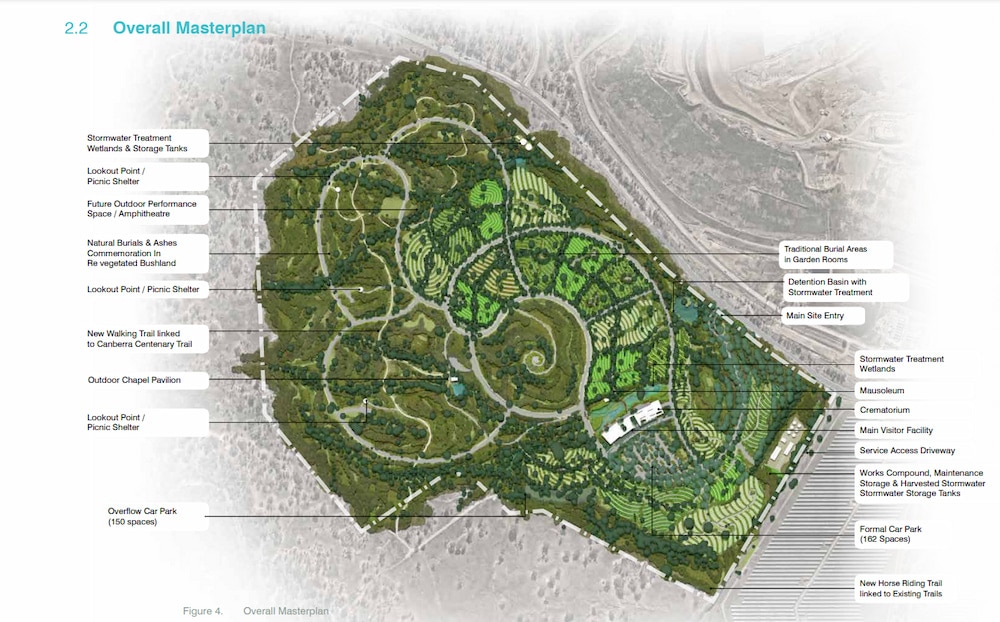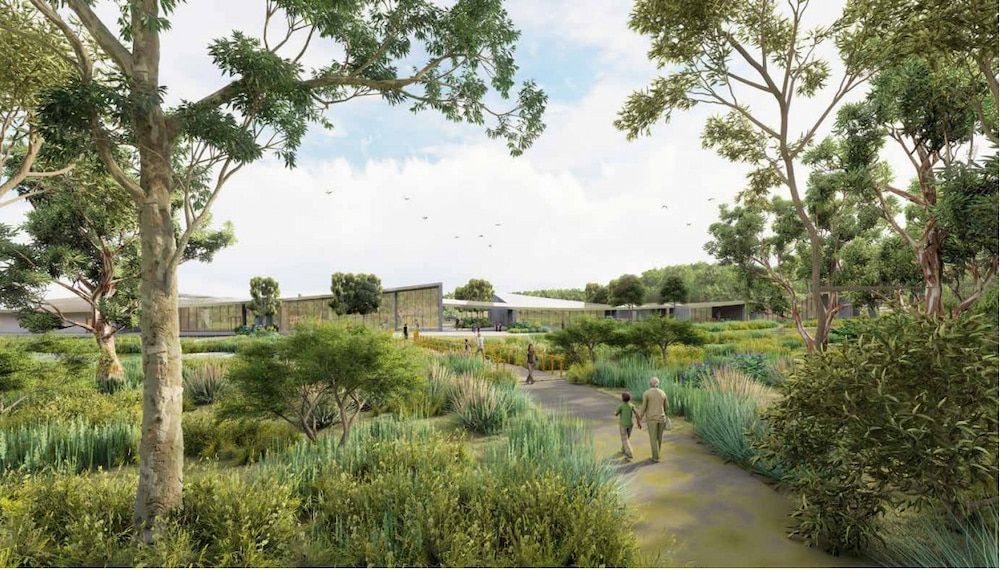The ACT Government has revised and updated its masterplan for the Southern Memorial Park Cemetery, to be built in Hume, based on community feedback earlier this year.
“The new cemetery [will] meet the needs of our growing city on the southside,” said Chris Steel, ACT Minister for City Services.
Southern Memorial Park is intended to provide interment services for south Canberra for the next century. A site off Long Gully Road and Mugga Lane was selected in 2009 as the most appropriate site, due to its size, zoning, access, and proximity to existing facilities, and the first masterplan was prepared in 2012.
The ACT’s population is projected to grow to 450,000 by 2022 and to 700,000 by 2058 – but south Canberra needs a cemetery. Woden Cemetery is fully subscribed, and will not be expanded into Eddison Park. Gungahlin Cemetery – in the north – is now the only cemetery in the ACT available to the general public.
“This presents equity issues for the south Canberra community, and means we do not have long-term capacity for burials in the ACT,” the government stated.

The cemetery will be built in four stages over the next 100 years. Within five years after detailed design is completed, Stage One will provide 2,500 burial plots (including 120 natural burial plots), a signalised entry on Mugga Lane, a works depot, and a playground. The 2021–22 ACT Budget allocated $350,000 to design plans for Development Approval submission.
From April to June, the government asked the community for their feedback on the masterplan documents, which elements should be prioritised in the design, and how the various spaces within the cemetery should be named. The government also consulted with faith groups and Aboriginal and Torres Strait Islander representatives over the last year, Mr Steel said.
According to the listening report, respondents liked the idea of ‘a bush cemetery’; they wanted a natural design that complemented the layout of the land, and preferred to use existing trees and use only locally native plants and trees, and to include memorial gardens for ashes and natural burials. Most people wanted sites to be named after plants and animals of cultural significance. Respondents wanted a well-maintained landscape, easy car parking, and accessible paths. They wanted quality recreational facilities, particularly public toilets, walking trails, and picnic areas.
The community feedback would inform the first stage of works.
“The importance of achieving a balance between providing some recreational amenity whilst maintaining the reflective, peaceful qualities of a cemetery will be a strong focus as the government moves through future design phases,” Mr Steel said.
Stage Two will be implemented over the next 50 years; it incorporates a crematorium, memorial halls, function halls, a café, a mausoleum, an outdoor chapel, an administration building, and supporting infrastructure.
Stage Three will be implemented for the 35 years after Stage Two; it incorporates areas of high cultural, ecological site constraints, and is suitable for natural burials, ashes interment, and supporting infrastructure. Stage Four (85 years from now) will provide for more traditional burials and supporting infrastructure.



